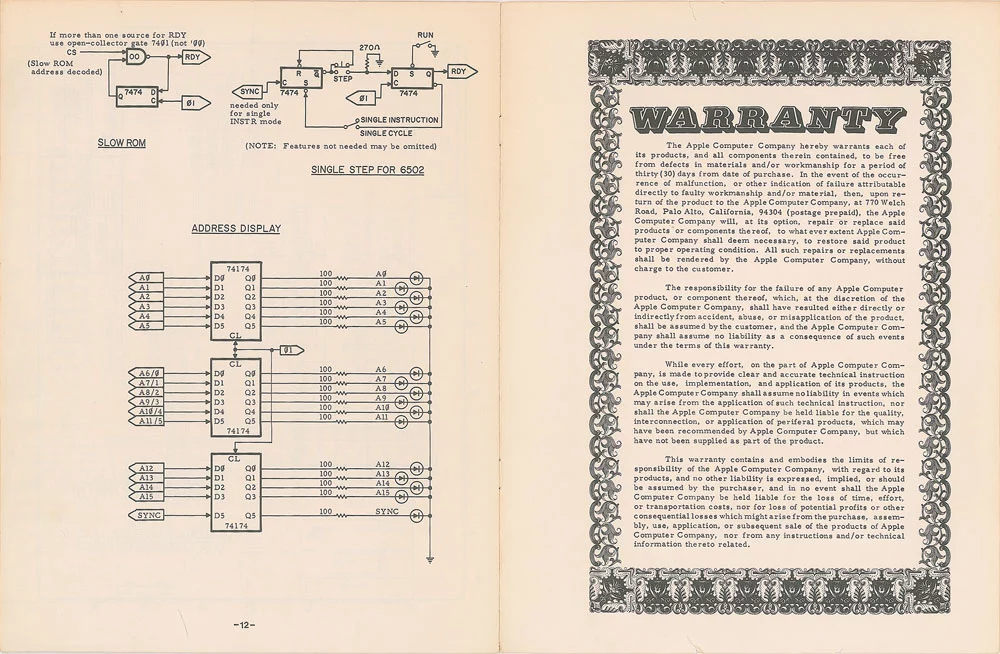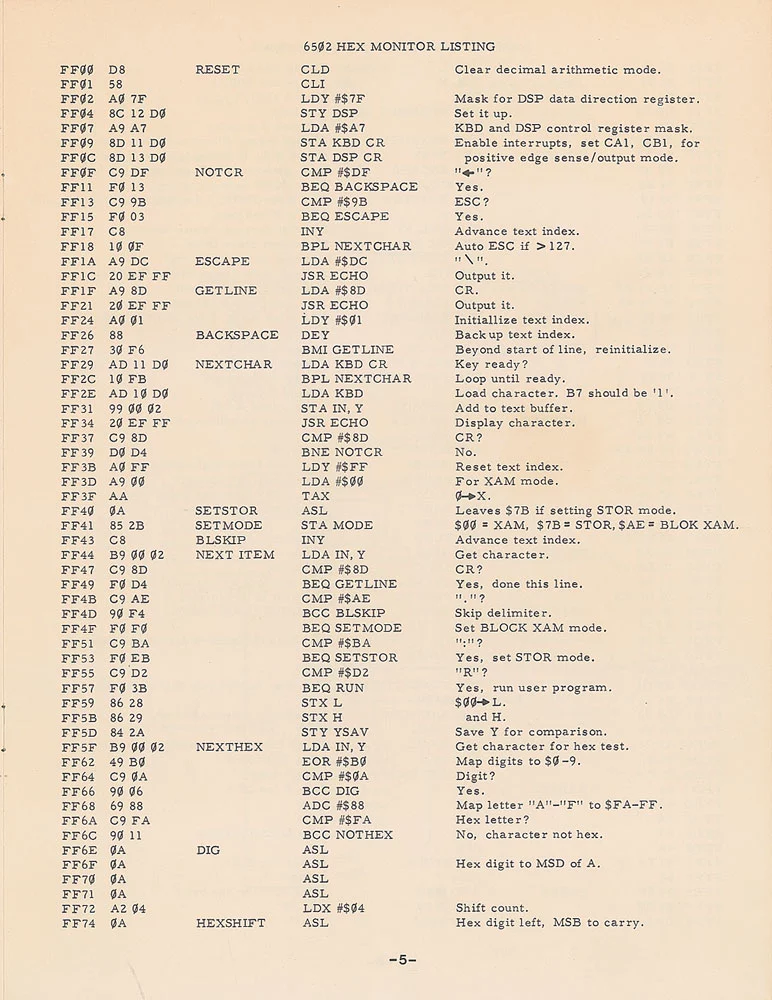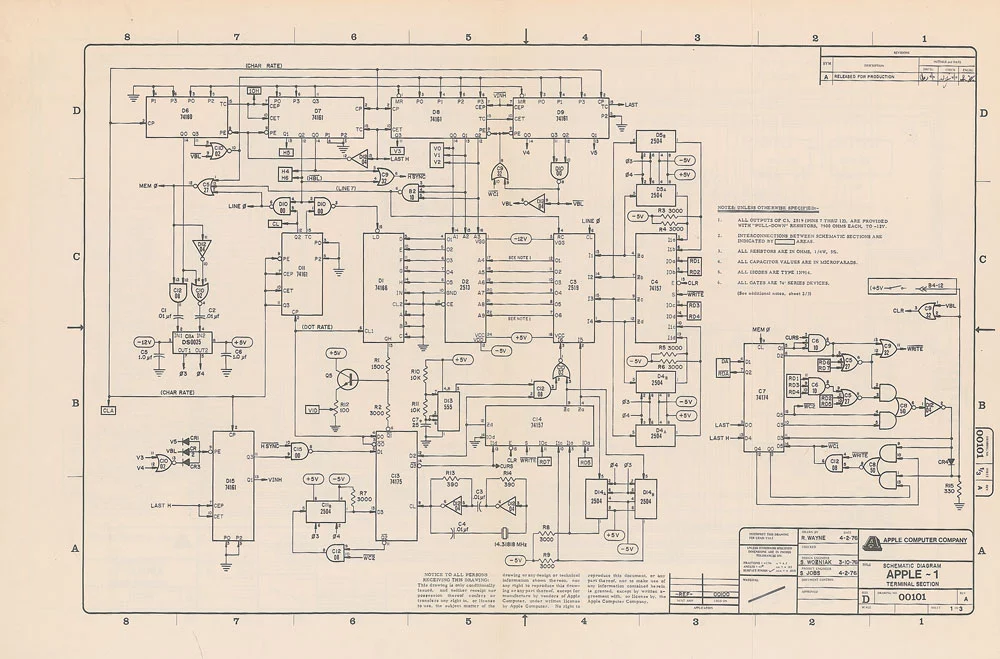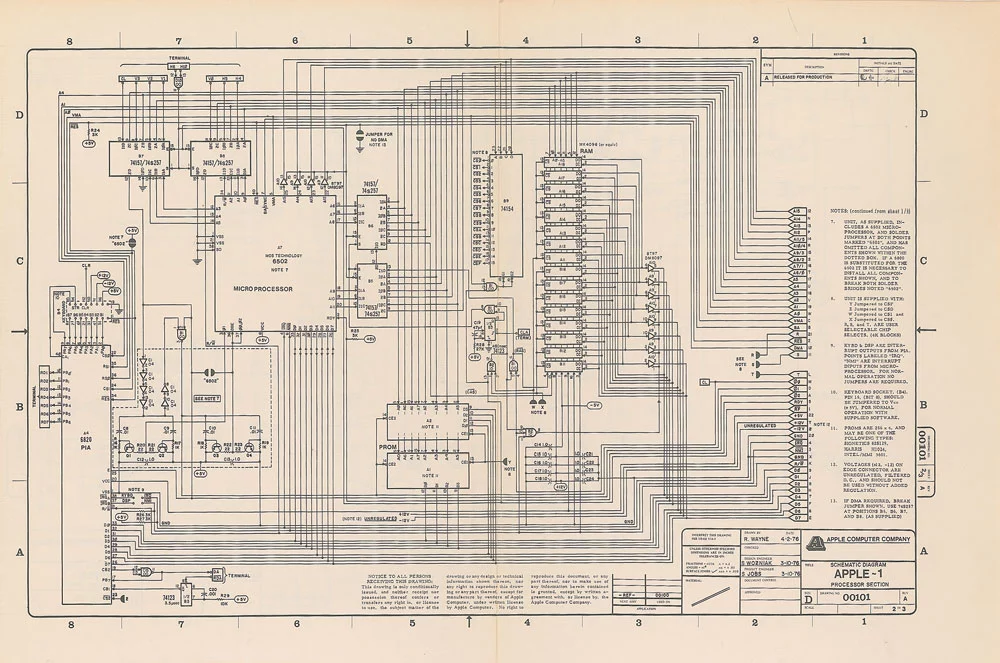The Apple-1 computer, launched in July 1976, wasn't the first personal computer per se, but to many, it may as well be. After all, this is the computer that helped propel a two-man business operating from a suburban garage into the world's most valuable company, a short – but remarkable – 35 years later. While we've seen a number of Apple-1 computers auctioned over recent years, this month sees one of the equally rare Apple-1 operating manuals going under the hammer.
Anything to do with the early days of Apple is of interest to collectors, technology historians and computer boffins alike, so it comes as no surprise that a faded, watermarked, 12-page operation manual for the iconic Apple-1 – the very first product from the then fledgling Apple Computer Company – would be worthwhile putting up for auction.

This is the first of two versions of the Apple-1 manual, and features the very first – and very temporary – logo for the company, depicting Sir Isaac Newton sitting under an apple tree. An almost bucolic and odd design for a tech company. The second iteration of the manual used the original version of the now instantly recognizable apple-with-a-bite-out logo, designed the next year by by Rob Janoff.
Inside the manual there's the requisite information about getting the system up and running, expanding the system and a fold-out wiring diagram of the computer. The auctioneers, RR Auction in Boston, describe the condition of the manual as "very good to fine, with light irregular grid-shaped toning to the front cover cover, a short tear to the top edge of the front cover, and a light circular stain inside the front cover."
The historical significance of this manual – or anything to do with the Apple-1 – is huge. In 1976, personal computers (then called microcomputers) existed on the market, but they were all in kit-form for hobbyists, and this required soldering and assembly skills. The Apple-1 was different, but not right away.
Apple-1's creator, Steve "Woz" Wozniak, took his new creation to the Homebrew Computer Club in Palo Alto, California to show his friends and share designs. His fellow club member, Steve Jobs, saw potential in Woz's creation, and convinced him that this thing really needed to go into production.
To get the business rolling, Jobs approached The Byte Shop in Mountain View, California (one of the first personal computer stores in the world), however, the owner, Paul Terrell, wanted something different. He saw a market for the Apple-1 beyond the hobbyist community, so he told the two Steves that he'd take 50 Apple-1s, but only if they came fully assembled. In those days fully assembled was a loose term. The Apple-1 didn't even have an enclosure (or a monitor and keyboard), but it also didn't require any soldering, and that was enough to change everything.
The Apple-1 went on sale in July 1976 and was priced at US$666.66. This was Woz's idea. Apparently it was because he liked repeating digits, and because $666.66 was a neat, one-third markup on the $500 wholesale price.
The two Steves managed to make around 200 Apple-1 computers over the next few months and eventually sold 175. Humble beginnings for a business that in the first quarter of this year, shipped around 3.98 million Macs alone and reported a company-wide revenue of $58 billion. Very few of these seminal computers remain – perhaps 70 according to the Apple-1 registry – with the auctioneers estimating that around 65 or so original Apple-1 operating manuals exist worldwide.
At the time of writing, the top bid for the manual had just exceeded the $10,000+ estimate.
Source: RR Auction









